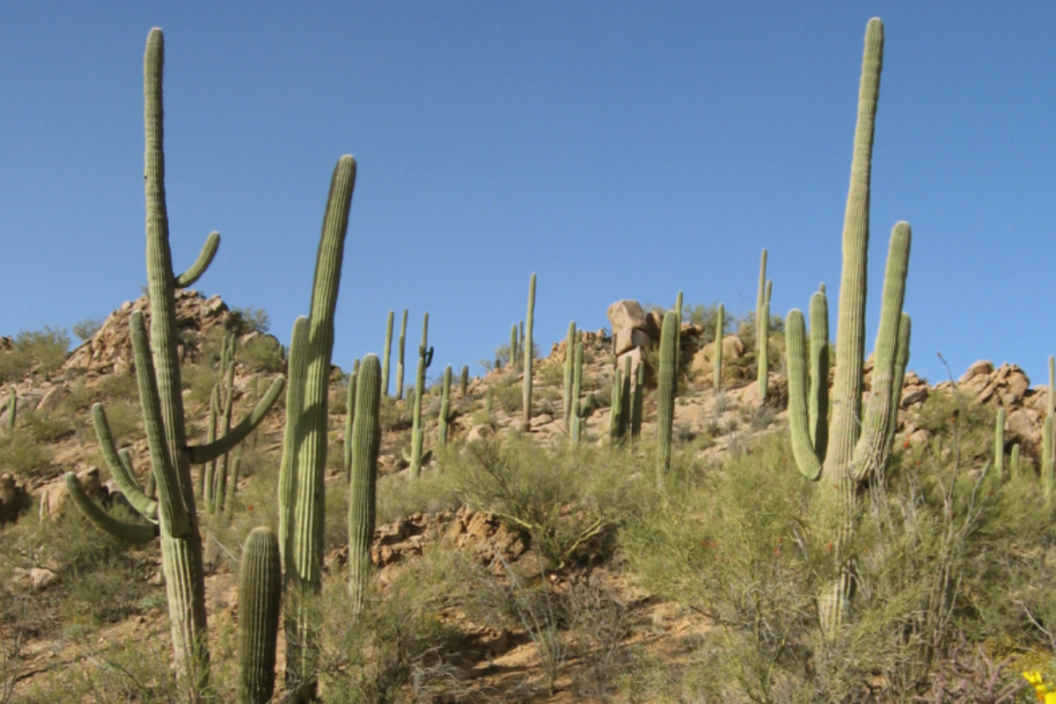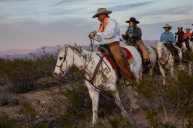The saguaro cactus is an instantly recognizable symbol of the American West. They're in all the old westerns and on your favorite classic country star's Nudie suits. They're in a Kacey Musgraves song. When you think of desert landscapes, you probably think of a beautiful, starlit sky and a giant saguaro cactus.
Videos by Wide Open Country
But you can't find saguaros just anywhere. The towering cacti only grow in a portion of the United States and Mexico in parts of the Sonoran Desert. And if you're looking for a prime spot for saguaro-spotting look no further than the Saguaro National Park in southern Arizona.
A Cactus Wonderland
The Saguaro National Park was officially established as a National Park in 1994, but the land has been revered for centuries by Native Americans. Some of the earliest residents, the Tohono O'odham tribe, considered the saguaro to be a type of humanity. In 1933, Herbert Hoover established the Saguaro National Monument just a few miles outside of the city of Tucson. Over the years, locals strived to build up the cactus sanctuary, with rangers fighting cactus rustling and trying to keep saguaros from being trampled by cattle. Today, the park sits on 91,716 acres of land protected by the National Park Service.
What is the Saguaro Cactus?
So what's so special about saguaros? For starters, they grow to over 40 feet tall and live for over 150 years. They don't grow their signature "arms" until 75 to 100 years of age. The cacti produce white flowers from April through June, pollinated by Gila woodpeckers, gilded flickers, honey bees, and bats. Saguaros also produce edible saguaro fruit that must be harvested by using a long pole. Other plant life differs by elevation. Desert scrub is present in lower elevations, desert grassland can be found in higher elevations, and trees such as pine forest and mixed conifer forest are present at even higher elevations.
Visiting Saguaro National Park
Aside from the majestic plants that paint the landscape, the park offers breathtaking views of mountain ranges. You'll also have a chance to spot wildlife, including roadrunners, horned lizards, javelina, Mexican spotted owls, Gila monsters and kangaroo rats. The park is also home to a variety of cacti and succulents, including Engelman's prickly pear cactus. Hikers enjoy the park's 165 miles of hiking trails and bikers can find mountain biking on the Cactus Forest Loop and Bajada Loop Drive. Campsites are only allowed at certain established backcountry areas. Signal Hill Trail in the western Tucson Mountain District leads to ancient petroglyphs. In the Rincon Mountain District, you can take Cactus Forest Dr for an incredibly scenic drive.
A weekly pass to the park costs $15 per vehicle and $5 for a person entering on foot or bicycle. The park sees its highest visitor rate from November to March, but there's no wrong time to visit this gorgeous gem of the American Southwest. You can also stop by the visitor center or Arizona-Sonora Desert Museum to learn more.
This article was originally published in 2017.




